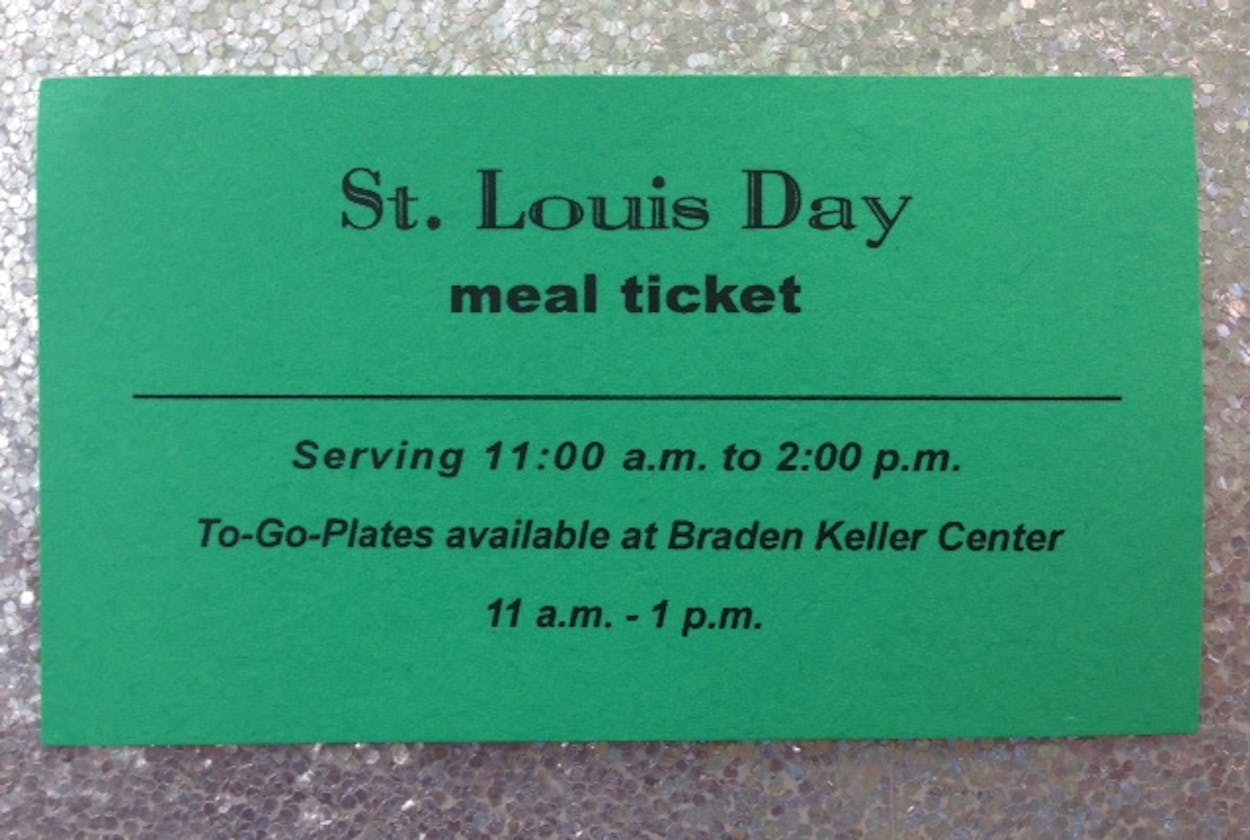This past Sunday, three tons of sausage and brisket were consumed at the 132nd St. Louis Day Celebration in Castroville, Texas. It was part of an annual event the town hosts to mark the feast of Saint Louis, a celebration that has has been dubbed “The Homecoming of the State of Texas.” The community comes together to put on the feast, which “hangs on the calendar like Christmas,” according to Frankie Kempf, a Castroville native and PR chairman for St. Louis Day.
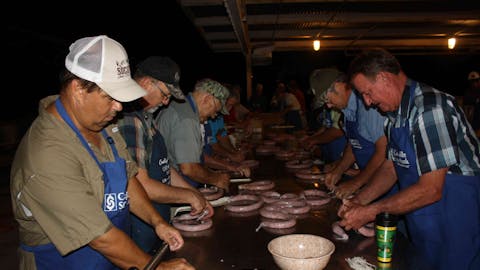
It started at 4:30 a.m. the Saturday before the celebration when sixty volunteers gathered under the big pavilion at Koenig Park on the north side of town to make and stuff 2,600 pounds of sausage. They start early to avoid the heat of the day (which could spoil the meat), breaking into multiple assembly line stations. Workers cut the beef and pork into chunks, add a secret seasoning pack, then grind the mixture and stuff it into casings. In all, it took the volunteers three hours to complete the task.
The secret seasoning is a point of pride for the community, and Ralph Hoog is one of very few who knows the spice recipe. It was passed down from his grandfather, but he’s not sure of its origin before that. When I asked the 68-year-old about the ingredients, he didn’t give up much information, but a mention of coriander raised his eyebrows. After a little more prying, he cracked ever so slightly. “Coriander is a big thing,” he said. “I think it’s the biggest thing that gives it the Alsatian flavor.”
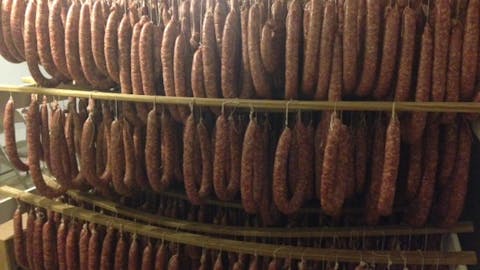
This is Alsatian sausage. In a state full of chorizo, German, Czech, and Polish sausages, this is a rare breed, but then Castroville is known as the Little Alsace of Texas. It was founded in 1844 by Henri Castro along with 27 other colonists from the Alsace region of France, which runs along the German border. These settlers arrived on September 3, 1844, and the first mass was celebrated nine days later on September 12, 1844. Within two years a church was erected. Today the largely Catholic community worships in St. Louis Catholic Church which dates from 1870. Out in front of the church is a statue of Saint Louis and a Texas historical marker noting the importance of sausage and barbecue in the celebrations of St. Louis Day. “Men smoked sausage and pit barbecued beef. Women prepared potato salad, cabbage slaw, and desserts,” it reads.
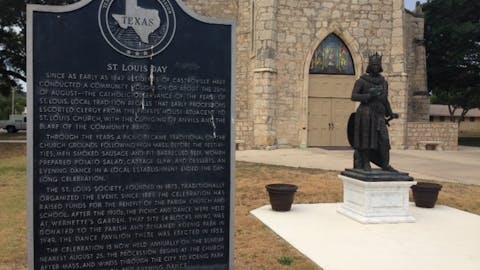
The pit barbecued beef was once done in a long L-shaped open pit, but in the nineties the pit was filled in and replaced with large, enclosed, steel cookers made from repurposed jet engine casings. I asked Darren Haby who learned from his grandfather how to cook on the open pits and has taught his son to use the current enclosed ones if he has a preference for the new or the old way. “It took seventeen pick-up loads of mesquite to fill the old pits. With these, it’s not quite five.”
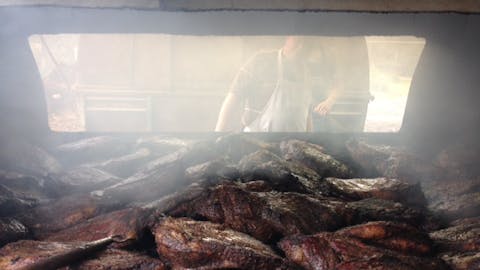
For this year’s celebration these cookers were filled with 3,500 pounds of brisket. It is simply seasoned with salt, black pepper, and garlic, but the distinct flavor comes mainly from the coals that it is cooked directly over, and the sop sauce that is mopped onto the meat when it’s flipped every hour. The old timers say the real flavor came from the bones back when they cooked whole calves. Frankie Kempf discussed the uproar that ensued when they moved to boneless briskets in the late sixties. “When I was a boy, they used calves. They butchered them on the bone. It got so big we needed something easier to handle. Some of the old-timers were not too happy with that. They called [brisket] suppenfleisch* meaning soup meat. They said ‘that’s good for soup, but not for barbecue.’ They believed you should cook it on the bone.”
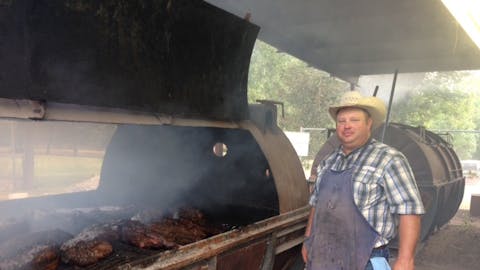
Travis Holzhaus directed the brisket operation. Even though he’s only 38, he’s a 25-year veteran of these pits. He knows the briskets are done “when we can stick a fork in them, and it slides out easy.” From the pit, they go to a team of cutters and slicers before being placed back into metal tubs. More of the mop sauce is poured over the sliced meat before it is covered and placed back into the pits to steam. Holzhaus handed me a slice straight off the pit. It tasted of sizzling fat with a slight vinegar tang. I asked him if he preferred this version or the slices that had steamed for a while. “I couldn’t tell you, cause I never eat any of the other. I’m so tired of barbecue once I’m done here.” After trying both versions, I’d suggest begging around the slicing table.
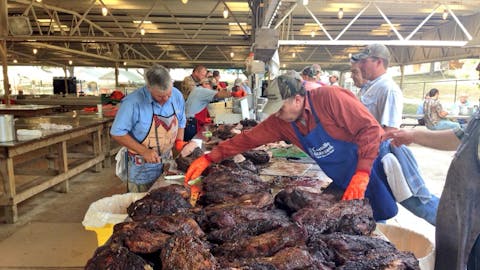
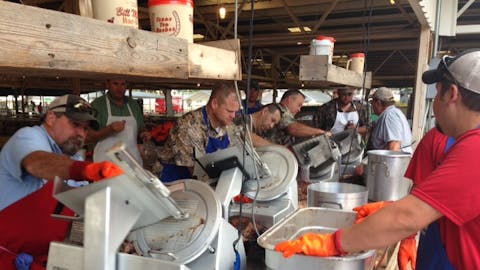
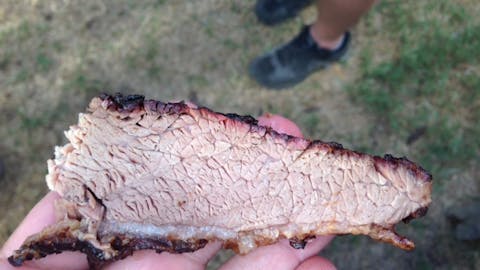
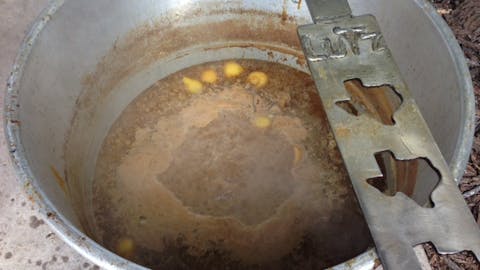
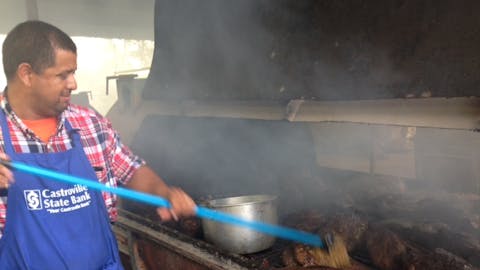
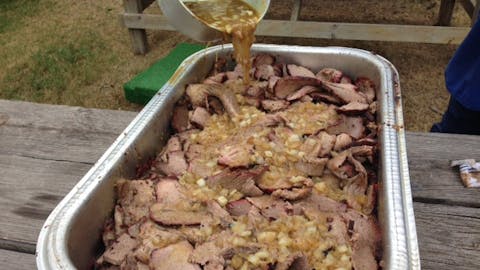
Nathan Lutz and Troy Haby are tasked with making the barbecue sauce and the sop sauce which they believe is integral to the barbecue’s flavor. “It’s what makes the meat so good and so tender,” says Haby. That sauce is made up of apple cider vinegar, onions, lard, Worcestershire sauce, lemons, mustard, salt, pepper, and garlic. The nose catches its pungency several yards away. The barbecue sauce is ketchup-based and is used as a finishing sauce just as the brisket is plated.
The sauces certainly provides a boost to the brisket’s flavor, but it’s the direct heat cooking that creates the unique taste and smell. This isn’t smoked meat. They call it barbecuing, not smoking. “You can get flavor from the smoke of the wood or the smoke of the fat. We get it from the smoke of the fat,” Frankie Kempf explains. The wood is all mesquite, and the night before the event they build an enormous fire to produce the hot coals required to cook with.
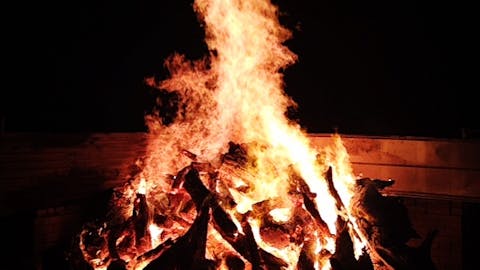
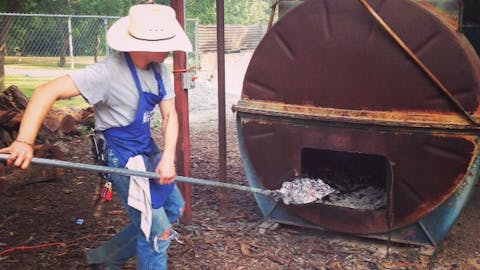
Standing a good ways from that roaring fire I spoke with the priest at St. Louis Catholic Church, Jim Fischler. He’s been at the church for three years, and the first year it was his duty to light the fire. They use kerosene to get it going, but someone that year had decided to use gasoline. Disaster struck as he approached the pile of wood with a blazing cotton mop to start it with. “The flames surrounded me when I was twenty feet from the fire. It just went BOOM!” He wasn’t seriously injured, but he let another priest from the parish light the fire this year.
By 10:30 a.m. on St. Louis Day, a line had already formed with diners clutching their $8 meal tickets and waiting for lunch service to begin at 11:00. The cost included the brisket and sausage, along with cole slaw made by a group of women from the church, pinto beans, and potato salad. Instead of being made en masse, the potato salad recipe is printed in the church bulletin and multiple church members bring eight or ten pound batches from home. White bread comes from Haby’s Bakery down the street. It’s a load of food for under ten bucks.
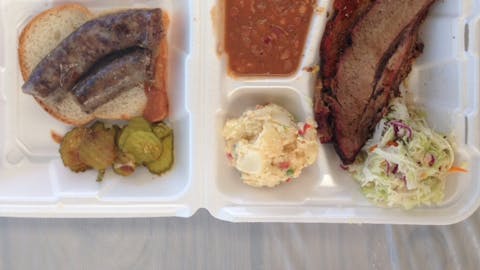
The beans are treated with as much reverence as the brisket. The same group makes them in huge batches every year (five hundreds pounds total this year), and it’s headed by Royce Groff who’s taking part in his thirty-seventh year of the celebration. “The secret to the beans is bacon. We put in forty-five pounds in each pot, and it’s cubed bacon, not ground bacon.” The bacon and beans stew in water for over three hours along with onions, garlic, salt, black pepper, and chili powder. The potato salad and slaw were good, but I’m still thinking about those silky, salty, smoky beans.
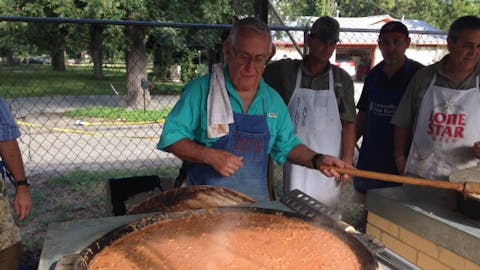
Most of the Alsatian sausage is boiled, but some goes into the pits for the barbecued sausage sandwich which can be purchased in addition to the plate. Chalk it up to my preference for smoky flavors, but I personally enjoyed the barbecued version. The barbecue on a bun should also not be ignored. As they’re slicing the brisket, they collect the crusty ends. These are chopped, mixed with the special recipe sauce, and served on a pillowy Haby’s Bakery bun. It was the finest chopped brisket sandwich that I’ve had in recent memory.


Before the day was done, they had served about ten thousand plates and raised $65,000 for the church.
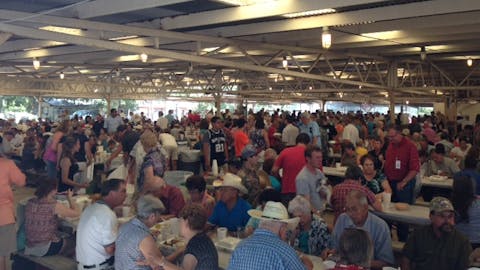
These decades-old traditions always need a new generation to carry the torch, so to speak. For instance, back in June when I was in Millheim, a few people expressed to me their worries that the event wouldn’t last beyond the current generation of cookers. But that’s not the case here in Castroville. Young, old, and in-between were well represented across the volunteer pool. Marques Fuentes is in his late thirties and has been cooking briskets since he was young. “All of our parents do this. My dad, Felix Fuentes, did this into his mid-sixties.” Darren Haby credits part of it to the church. It’s a requirement in religious education and in some of the area high schools to do community service work.”This counts as community service, so we have a lot of young kids down here to work.” The high level of interest from the entire congregation means the traditions are being passed down faithfully and accurately, and will likely continue for generations to come.
* There’s also a traditional Alsatian dish called pot-au-feu or suppefleisch which is a beef stew.


